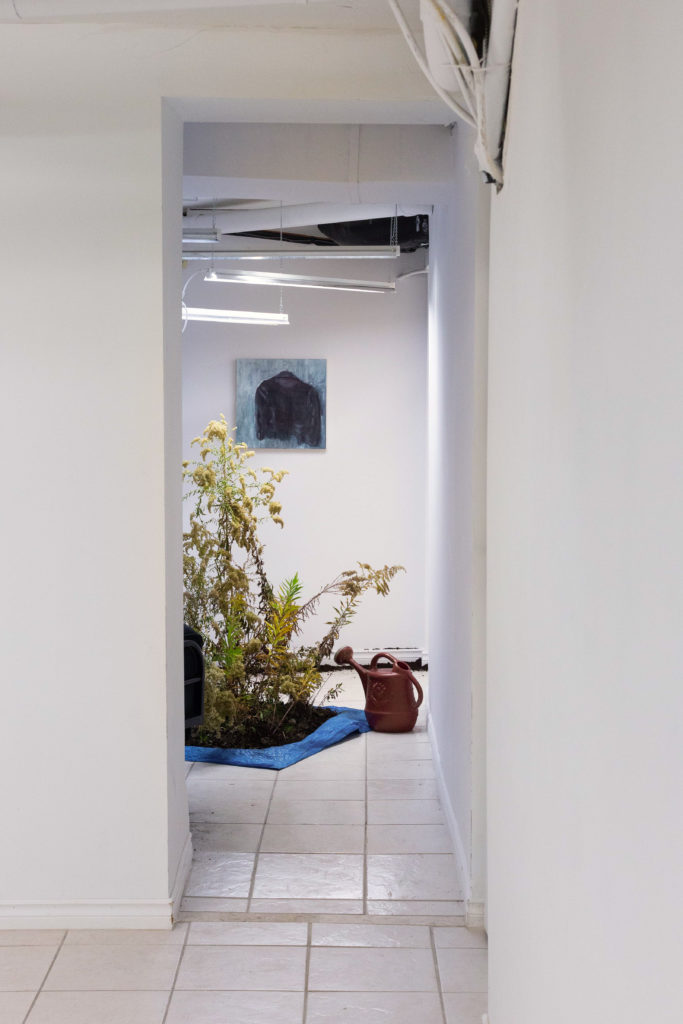Zainab Hussain
All images are of Area Rug, 2019-20, Site-specific, garden installation, mixed media. All images by and courtesy of the artist.Plants sit somewhere between animate and inanimate. They interact with and have an effect on their environment, they exert a measure of control over it, and in their own slow way shape it to accommodate themselves. In thinking about concepts of home and homeland, of culture and environment, and of creating space for ourselves, I’m drawn to the concept of a “garden” and working with plants to question the spaces we build for ourselves and how those spaces interact with the greater environment. Area Rug is an assemblage of found furniture items—an armchair or couch, a table lamp, and fluorescent grow lights overhead—and approximately one square meter of vegetation. The installation is always site specific, the furniture and plant matter collected locally – chosen and assembled to reflect the city the work is existing in – taken from spaces in a state of flux, it is the re-growth that appears in the interim between clearcutting and construction.

 |  |
I’m interested in the interaction that occurs in these in-between spaces, no longer forest and not yet developed, not residential and not natural, disturbed but vacant, where these pioneer or colonizer plants begin to restore the area to a diverse ecosystem although it will never reach full restoration. I wanted to mix spaces, combining the familiar living room setting and the weed-filled field to make something that is just to the side of familiar. Each time this installation is displayed the plants are sourced from the local area. In the first iteration, about one square meter of plant material was sourced from an area in Kanata that was clear cut in anticipation of a new train station, and the second from a vacant lot in the portlands area of Toronto. Each sample consisted of a mix of native, naturalized, and invasive plants such as Black-eyed Susans, Goldenrod, Burdock, wild carrot, and ‘dog-strangling vine. The variety and appearance of the plants also depends on the season it is collected in. The goldenrod in the second iteration of the installation actually went to seed over the course of the show as it was collected in late summer.
We often bring plants into our homes and private spaces but in a controlled and curated way; they exist there on our terms. Inherent to the act of gardening (whether indoor or outdoor) is an element of care. This installation exists and transforms over time as a collaboration – the artist provides adequate light and soil, a watering can sits to the side for guests to water the “rug,” and the plants grow, change color, release seeds and potentially die over the duration of the display.


In the case of this work, an uncomfortable ecosystem (one which we didn’t cultivate) thrusts itself into our private space, taking up the area that a rug would normally occupy, an area we would normally easily and comfortably walk over. The plants become an equal participant in shaping the indoor environment. The empty chair asks for someone to sit and face the ‘field,’ suggesting an exchange could possibly take place. This artwork hopes to create an interactive space that uses familiar objects, and elements of comfort and discomfort to draw the viewer in and perhaps ask for a moment of rest and contemplation (or confrontation).
 |  |

Zainab Hussain is a first generation Indian-Canadian multidisciplinary artist based in Ottawa. She uses textiles, text, photography, paint, sound, plants, and installation to explore how the intertwining of multiple histories, narratives, and materials play a role in building present and future identities. Her work is predominantly concerned with the fragmented, dispersed, and untethered, nature of the diasporic experience.